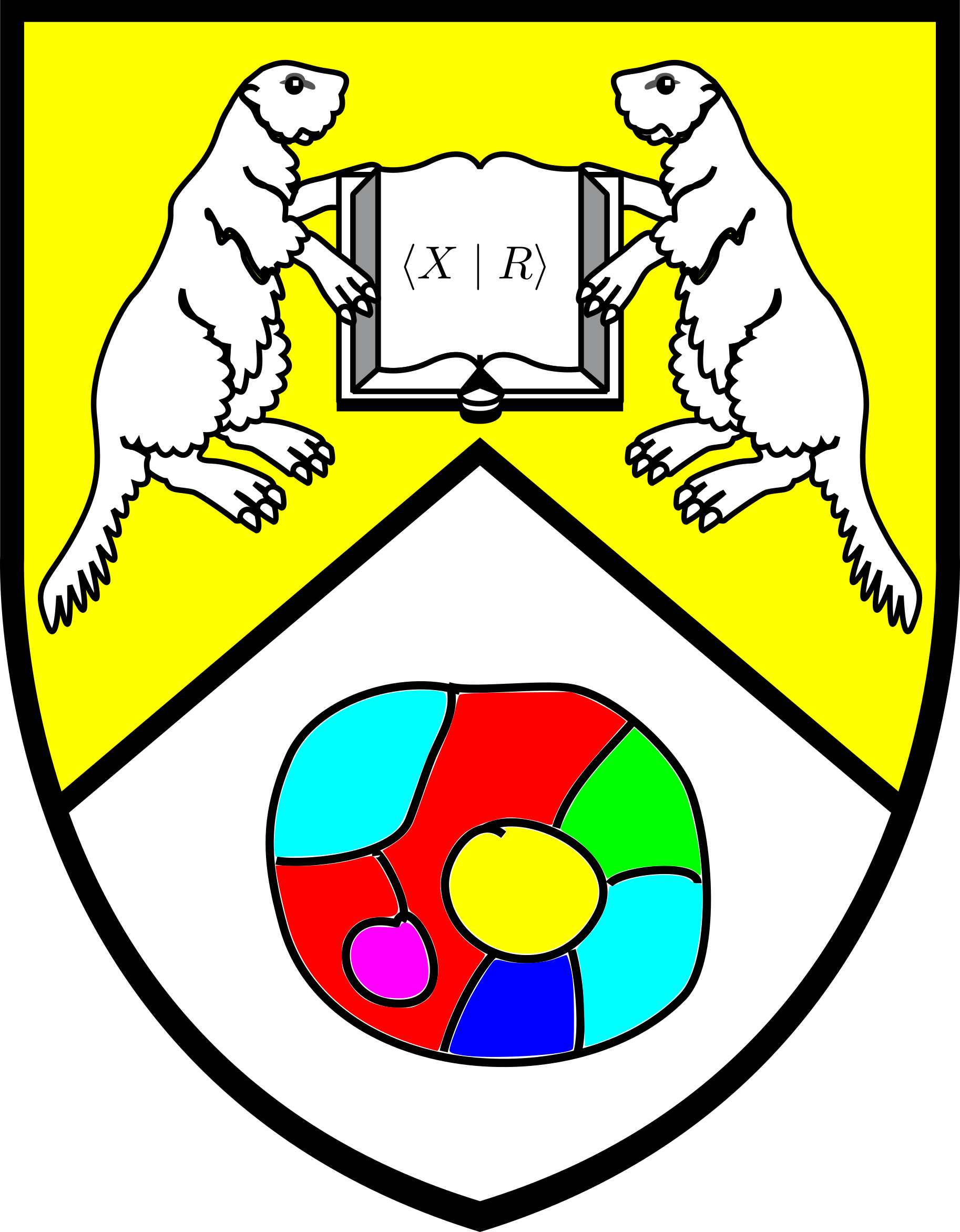Section 1.3 The universal property of the free group
Recall \(F(X)\text{,}\) the free group on an alphabet \(X\) consists of the set of reduced words in \(X\) and multiplication is defined by concatenation. The free group is constructed by taking all long products of elements of \(X\text{.}\) Because we need to have inverses we also add the elements \(X^{-1}\text{,}\) and this is enough to construct a group.
The free group plays a crucial role because of the following universal property.
Theorem 1.3.1. The universal property of free groups.
Let \(G\) be any group and let \(F(X)\) be the free group on the alphabet \(X\text{.}\) Then for any functionIn particular, by the First Isomorphism Theorem, because \(X\) can be any set, this property implies that every group is the quotient of a free group. If, up to now, our construction of the free group (involving generalized associativity and reduced words, seemed a bit painful, this work will pay itself off by making the universal property straightforward to prove.
Let's sketch the proof and leave the details as an exercise. Suppose you are given some \(\varphi:X \to G\) which maps each letter \(x \in X\) of the alphabet an element \(\varphi(x) \in G\text{.}\) Then we can extend this to a function \(\varphi^*: F(X)\to G\) as follows. Let \(w = a_1^{\epsilon_1}\cdots a_n^{\epsilon_n}\text{,}\) where each \(a_i \in X\) and each \(\epsilon_i \in \{1,-1\}\text{,}\) be some arbitrary element of \(F(X),\) which we can also consider a long product of elements in \(X^{\pm 1} \subset F(X)\text{.}\) Then we set
which is a product of elements of \(G\text{.}\) Generalized associativity and the fact that if \(w =_{F(X)}w'\) then \(\varphi^*(w)=\varphi^*(w')\) ensure that this mapping is well-defined. Details of showing that this is a homomorphism is left as an exercise.
We end this lecture with the following result which algebraically characterizes free groups.
Corollary 1.3.3.
Let \(G\) be some group with a subset \(Y\subset G\) such that for any group \(H\) and any map \(f:Y \to H\text{,}\) there is an extension of \(f\) to a homomorphism \(f^*:G \to H\text{.}\) Then \(G\) is isomorphic to the free group \(F(Y)\text{.}\)Proof.
For clarity let us take \(X\) to be a copy of \(Y\text{,}\) i.e. we have a bijection \(\psi:X\to Y\) and we denote its inverse \(\phi:Y \to X\text{.}\) We consider \(Y\subset G\) and \(X \subset F(X)\text{.}\)
By Theorem 1.3.1 there is a homomorphism \(\psi^*:F(X) \to G\) which extends \(\psi\text{.}\) By hypothesis there is also a homomorphism \(\phi^*:G \to F(X)\) which extends \(\phi\text{.}\)
Let \(w = \prod_{i=1}^n x_i\text{,}\) where \(x_i \in X^{\pm 1}\) be an arbitrary element of \(F(X)\text{.}\) Then by the definition of a homomorphism and generalized associativity we have:
since on \(X\text{,}\) \(\phi^*\circ\psi^*= \phi\circ\psi = Id.\)
The homomorphisms \(\psi^*,\phi^*\) are therefore inverses of each other; and thus are isomorphisms.
Any subset \(Y\) of a group \(G\) with this universal mapping property is called a basis of \(G\), and since we're free to send elements of \(Y\) wherever we want, we say that \(G\) is a free group with basis \(Y\text{.}\) As is the case in linear algebra, bases are never unique, but that is for another lecture (not the next one)!
Exercises 1.3.1 Exercises
1.
Prove Theorem 1.3.1.Hint: This really amounts to verifying that the mapping (1.3.1) is well-defined (which is ensured by generalized associativity) and the fact that \(w =_{F(X)}w'\) then \(\varphi^*(w)=\varphi^*(w')\text{.}\) Prove this fact by starting with the special case where \(w\) is obtained from \(w'\) by an elementary insertion and deletion and proceeding by induction. Verifying that the mapping is a homomorphism is routine.
